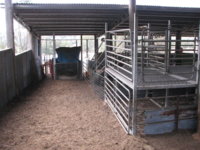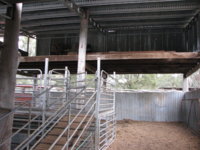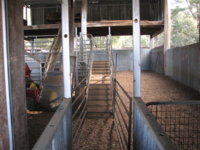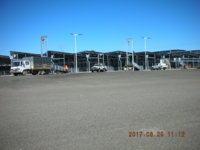- Thread starter
- #21
The Old Ram-Australia
Herd Master
- Joined
- Jan 18, 2011
- Messages
- 978
- Reaction score
- 2,066
- Points
- 303
POST 2. Examining option 2: YOU CAN CHOOSE TO BE “A BREEDER OR A FEEDER”?
Have you considered the best path for you?
At the time of our fist farm we had chickens, ducks, pigs, goats, ponies and a cow. But all of our feed was via my job at Kellogg, where I got reject and damaged stock via my job. Without this “free feed” would it have been viable? Even though we sold eggs and goats it would have been a “loss making” venture.
So before you invest in livestock, consider which path is the one for you from a finical outcome perspective.
Option 2... Is about reducing your cost of living, so a veggie garden and orchard are top of the list. Chickens /ducks are next on the list we had a good market for duck eggs to the Asian market for “pickling” and a regular sale for Chicken eggs every week ,because even in those days people appreciated “fresh farm eggs”(remember this is almost 40 years ago).
First you have to work out just what you consume in a 12 month period. Once you eat your own chickens, you will “hate “the idea of store bought. Next is Pork, Lamb and Beef, how much do you consume over a year? Let’s say your farm is between 5 /10 ACS, breeding your food is not really an option because your COP (cost of production) could be twice the cost at the supermarket. Even on out 2nd farm of 25 ACS we sent our cow (Betsey) up the road to a neighbors’ Bull. We were however breeding performance tested goat Bucks for sale for the production of Goat meat along with farmed kids for the local Goat meat trade. We had also developed a flock of Naturally Colored Sheep (Corridales) with fleeces selling to spinners and weavers. They would ring and come to the farm, pick out the fleece and I would shear it for them on the spot.
Buying a “weaned “lamb, pig, goat or calf and feeding them until the “Fall “mainly on the available grass, is a very “cost effective” method of reducing your cost of living. It’s only until you take the “next step” that it becomes economically viable to proceeding to a breeding project. I know that everyone wants to be a “Stud Breeder” of a breed that has caught there eye, but you need to think “rationally” about what you are trying to achieve here.
Meanwhile down on the farm: The trip to the sale this week resulted in the purchase of 6 Dorper/ Border Leister Ewes, two of which were showing in-lamb, they are in light condition and have a had a pretty tough time of it, so I just shore off of the “rough” and finish the job after they lamb and put on some condition. The hardest sheep to shear are the ones in light condition, a fat sheep although heavier too drag onto the boards is a lot easier to get the fleece off.
Lambing has been progressing quite well with only one ewe lost, she suffered an anal prolapse and trapped the lamb inside her, which resulted in her death (still I dressed her out and she fed the working dogs for over a week).Quite a lot of the lambs are on the light side born, but are quick to “rise” and feed and will easily cover a km by the second day.
This morning when I rose about 1 hr after sunrise I noticed the weather was “not to flash” away to the South-East, a look at the radar did not show anything amiss but I let the lambing ewes into a Woodland Paddock just the same mid-morning, come 1 pm and a Southerly change swept through with rain and some Snow-flakes by then the air-temp was below zero in the wind so my decision was the correct one, BTW, it’s not the cold rain which kills new lambs it’s the “wind” that chills them .
Don’t forget if you are new to the thread, return to the start so the context and the history make sense...T.O.R.

Have you considered the best path for you?
At the time of our fist farm we had chickens, ducks, pigs, goats, ponies and a cow. But all of our feed was via my job at Kellogg, where I got reject and damaged stock via my job. Without this “free feed” would it have been viable? Even though we sold eggs and goats it would have been a “loss making” venture.
So before you invest in livestock, consider which path is the one for you from a finical outcome perspective.
Option 2... Is about reducing your cost of living, so a veggie garden and orchard are top of the list. Chickens /ducks are next on the list we had a good market for duck eggs to the Asian market for “pickling” and a regular sale for Chicken eggs every week ,because even in those days people appreciated “fresh farm eggs”(remember this is almost 40 years ago).
First you have to work out just what you consume in a 12 month period. Once you eat your own chickens, you will “hate “the idea of store bought. Next is Pork, Lamb and Beef, how much do you consume over a year? Let’s say your farm is between 5 /10 ACS, breeding your food is not really an option because your COP (cost of production) could be twice the cost at the supermarket. Even on out 2nd farm of 25 ACS we sent our cow (Betsey) up the road to a neighbors’ Bull. We were however breeding performance tested goat Bucks for sale for the production of Goat meat along with farmed kids for the local Goat meat trade. We had also developed a flock of Naturally Colored Sheep (Corridales) with fleeces selling to spinners and weavers. They would ring and come to the farm, pick out the fleece and I would shear it for them on the spot.
Buying a “weaned “lamb, pig, goat or calf and feeding them until the “Fall “mainly on the available grass, is a very “cost effective” method of reducing your cost of living. It’s only until you take the “next step” that it becomes economically viable to proceeding to a breeding project. I know that everyone wants to be a “Stud Breeder” of a breed that has caught there eye, but you need to think “rationally” about what you are trying to achieve here.
Meanwhile down on the farm: The trip to the sale this week resulted in the purchase of 6 Dorper/ Border Leister Ewes, two of which were showing in-lamb, they are in light condition and have a had a pretty tough time of it, so I just shore off of the “rough” and finish the job after they lamb and put on some condition. The hardest sheep to shear are the ones in light condition, a fat sheep although heavier too drag onto the boards is a lot easier to get the fleece off.
Lambing has been progressing quite well with only one ewe lost, she suffered an anal prolapse and trapped the lamb inside her, which resulted in her death (still I dressed her out and she fed the working dogs for over a week).Quite a lot of the lambs are on the light side born, but are quick to “rise” and feed and will easily cover a km by the second day.
This morning when I rose about 1 hr after sunrise I noticed the weather was “not to flash” away to the South-East, a look at the radar did not show anything amiss but I let the lambing ewes into a Woodland Paddock just the same mid-morning, come 1 pm and a Southerly change swept through with rain and some Snow-flakes by then the air-temp was below zero in the wind so my decision was the correct one, BTW, it’s not the cold rain which kills new lambs it’s the “wind” that chills them .
Don’t forget if you are new to the thread, return to the start so the context and the history make sense...T.O.R.






